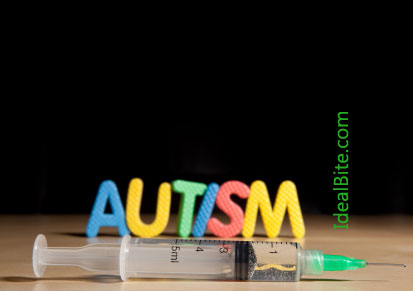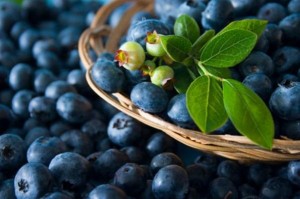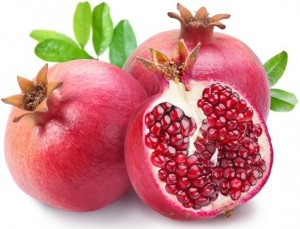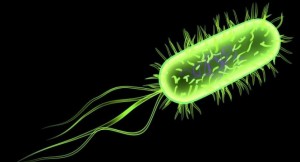Vaccines with aborted fetal tissue fragments: is this the cause of autism?

3 John 1:2
Beloved, I wish above all things that thou mayest prosper and be in health, even as thy soul prospereth.
For anyone first reading the Health and Nutrition Update, please read this first: Your Health.
Also, please go to God’s Health System and subscribe to receive the updates.
Always remember that you are in charge of your health and not the doctors. Do not put your life in their hands without first seeking God and His health system.
Commentary
The goal of this blog now is to build up your health and especially the immune system to withstand the coming pestilences that are now rampant in America and the world. God gave the knowledge to prepare for pestilences, so take advantage of this information. The focus is posting articles with great information that can immediately help your health and quality of life.
God bless you.
Articles
Babylonian Health System
 Vaccines contain DNA fragments from aborted human fetal cells and viruses that could cause both autism and cancer
Vaccines contain DNA fragments from aborted human fetal cells and viruses that could cause both autism and cancer
“The genetic material from which many viral vaccines are produced appears to be a trigger of both autism and cancer, according to shocking research compiled by a renowned molecular and cellular physiologist from Stanford University in California.
Dr. Theresa Deisher, Ph.D., who was the first person to discover adult cardiac-derived stem cells, found that residual cellular DNA from aborted babies demonstrates both oncogenic and infectious characteristics in vaccines.
Aborted human fetal tissue, it turns out, has long been used in the production of vaccines, despite the fact that traces of DNA from this tissue can persist in the final product. The consequences of this, says Dr. Deisher, can include both genetic damage and markers of autism.
“It is possible that these contaminating fragments could be incorporated into a child’s genome and disrupt normal gene function, leading to autistic phenotypes,” wrote Dr. Deisher in a paper titled “Spontaneous Integration of Human DNA Fragments into Host Genome.”
Health and Nutrition/ GMO and Contaminated Food
 The Food Industrial Complex This is a very good article which goes far beyond the silliness of school lunch guidelines. It goes into a history of processed versus fresh, natural food and why the industry is skewed toward providing unhealthy fare to consumers – in a word, profit. What does that do both to farmers and people who want to stay healthy? Read this for an interesting, intelligent discussion of the subject. It’s worth your time.
The Food Industrial Complex This is a very good article which goes far beyond the silliness of school lunch guidelines. It goes into a history of processed versus fresh, natural food and why the industry is skewed toward providing unhealthy fare to consumers – in a word, profit. What does that do both to farmers and people who want to stay healthy? Read this for an interesting, intelligent discussion of the subject. It’s worth your time.
“In 2011, during a debate over the nutritional guidelines for school lunches, Congress decided that pizza counts as a vegetable. And not for the first time.
The American government first proposed that an unhealthy food—if it contains trace amounts of a healthy ingredient—could count as a vegetable in 1981. Looking for ways to cut the school lunch budget, the Reagan Administration suggested that cafeterias include ingredients in condiments like pickle relish and ketchup toward nutritional requirements.
This was not good politics. Democrats and the press had a field day saying that Reagan had just classified ketchup as a vegetable. “This is one of the most ridiculous regulations I ever heard of,” Republican Senator John Heinz, owner of Heinz, told the press, “and I suppose I need not add that I know something about ketchup and relish.”
The Reagan Administration dropped the proposal, but it soon became law anyway. When the Obama Administration directed the Department of Agriculture to revise school lunch policies in 2011, experts took aim at the rule that allowed the tiny amount of tomato paste in pizza sauce to count toward the vegetable requirements of each meal.
Any changes made by the Department of Agriculture could jeopardize huge contracts for companies that supply food for school children’s lunches, so the food industry responded with a $5.6 million lobbying campaign. According to Margo Wootan, director of the Center for Science in the Public Interest, two multibillion dollar companies spent the most: Schwan and ConAgra, which each had large contracts for pizzas and fries used in school lunches.
Before the U.S. Department of Agriculture (USDA) could make any recommendations, Congress ensured that the push for healthier lunches did not hurt the manufacturers of unhealthy foods. Congress passed an agriculture appropriations bill that would deny the USDA funding to enforce any policies that prevented the potatoes in french fries or the tomato paste in pizza from counting as nutritional elements.”
Just one junk-food snack triggers signals of metabolic syndrome
Just one high-calorie milkshake was enough to make metabolic syndrome worse for some people. And overindulgence in just a single meal or snack (especially junk food) is enough to trigger the beginnings of metabolic syndrome, which is associated with the risk of developing cardiovascular disease and diabetes (obesity around the waist and trunk is the main sign).
E-coli bacteria, found in some China farms and patients, cannot be killed with antibiotic drug of last resort This is very dangerous, especially since the Obama administration has approved selling Chinese poultry and other meats in US supermarkets, without requiring that it be labeled as originating there. Scroll down within our previous posts on this subject pertaining to pet food, and the thyroid drug shortage because of epidemics and health disasters related to Chinese food ingredients: Pet Health – Deadly Foods Update, and Cardboard Box Cats and Do The Elderly Need “Protected” From Coconut Oil & Natural Supplements? Big Pharma Wants Us To Think So
“Widespread E-coli bacteria that cannot be killed with the antiobiotic drug of last resort — colistin — have been found in samples taken from farm pigs, meat products, and a small number of patients in south China, including bacterial strains with epidemic potential, an international team of scientists revealed in a paper published Thursday Nov. 19 in the journal The Lancet Infectious Diseases.
The scientists in China, England, and the U.S. found a new gene, MCR-1, carried in E-coli bacteria strain SHP45. MCR-1 enables bacteria to be highly resistant to colistin and other polymyxins drugs.”
 Is ‘Expired’ Food Really Unsafe to Eat?
Is ‘Expired’ Food Really Unsafe to Eat?
“We’ve all done it: Taken the milk out of the fridge, noticed the “sell-by” date has passed, and given it a sniff to see if it’s still good. The question is: Are you putting yourself at risk by consuming milk and other foods that have passed their “expiration” date?
The answer, health experts say, is often no — depending on how much time has passed since that date and what type of food you’re eating.
In fact, Consumer Reports estimates that for every dollar Americans spend on food, about 10 cents’ worth is unnecessarily tossed into the trash. That adds up to about $1,500 of wasted food per year for an average family of four, according to the U.S. Department of Agriculture.
The primary reason: Misconceptions about what date labels on food packages — “sell by,” “use by,” “best by,” and the like. “Most consumers don’t realize that they’re really more about food quality than food safety,” says Robert Gravani, a professor of food science at Cornell University, in the current issue of the magazine.
While food may not be at its best after those dates — in terms of freshness or taste — most can be safely consumed days or even weeks after the label suggests it is past its “expiration” date. And the sniff test is often an acceptable way to determine if an “expired food” is still good.”
“Olives are one of those wonders of nature that are easy to take for granted, yet deserve special attention. Technically a fruit, olives belong to the group of “drupes,” which are fruits with a pit or stone. Other drupes include peaches, mangos, cherries, nectarines, almonds and pistachios.
There are hundreds of varieties of olives, which grow on trees that are mostly native to the Mediterranean (as well as areas of Asia and Africa). Olive trees are remarkable in their own right, as they tend to live to be several hundred years old. There is at least one record of an olive tree that is 2,000 years old.
…If you love olives, you’re in luck. This is one satisfying snack or meal ingredient you can feel good about eating. Many people have shunned olives because of their high fat content, but this is precisely one reason that makes them so very good for you. And there are others as well.”
 Blueberries Can Combat Alzheimer’s
Blueberries Can Combat Alzheimer’s
“As a superfood already prized for its antioxidant properties, new American research has now highlighted the benefits of blueberries on memory and cognitive function. This wonder berry could help combat the devastating effects of forms of dementia such as Alzheimer’s disease.
Already known for their potential to cut the risk of cancer and protect the heart, blueberries have now been studied for their effects on brain aging.
Previous studies have shown that daily consumption of the fruit can reduce blood pressure in just eight weeks. As for the brain, a study published in April 2013 found that the polyphenols contained in blueberries encourage autophagy, the cellular self-cleaning process removing toxic proteins that build up in the brain.
This latest study monitored 47 American adults aged 68 and older with mild cognitive impairment. Over a period of 16 weeks, researchers from the University of Cincinnati, USA, gave participants either freeze-dried blueberry powder, equivalent to a cup of berries, or a placebo powder once a day.
Those given blueberry powder saw their memory improve, with better access to words and concepts. An MRI scan (magnetic resonance imaging) of the brain showed more intense brain activity in this group of participants compared with those given the placebo.”
 How pomegranates can help every inch of your body – from oral care, to skin care, to fertility and more
How pomegranates can help every inch of your body – from oral care, to skin care, to fertility and more
“There is hardly a better superfood than pomegranates, and for all the good they do your body, they should be a daily part of your diet.
As reported by Top 10 Home Remedies, pomegranates have been a popular fruit in the Middle East, Asia and India throughout history, but in recent decades they have become more popular in other regions of the world, in large part because of their many health benefits and outstanding nutritional value…
“They are an excellent source of dietary fiber as well as vitamins C, K and several B vitamins. Other nutrients include iron, magnesium, phosphorus, potassium, folate, manganese, selenium and zinc. The fruit is also a good source of omega-6 fatty acids.
“The arils, as well as the rind, have many medicinal benefits due to the antioxidants in them, such as polyphenols, tannins, flavonoids and anthocyanins.”
In addition, this tasty fruit has antiviral, anti-tumor and anti-inflammatory properties as well. Relatively low in calories, pomegranates can also be enjoyed by folks who are watching their weight.
The arils, or seed pods, can be eaten raw or made into a healthy juice which has a distinctly tart flavor. Also, the arils can be added to a host of other foods and recipes including soups, main courses, desserts and smoothies. And you can even make oil with the seeds – an oil that has a range of cosmetic benefits, according to Top 10 Home Remedies.”
Oils
 The Major Role Soybean Oil Plays in Obesity and Diabetes
The Major Role Soybean Oil Plays in Obesity and Diabetes
“Soybean oil is the most common oil used in the US, but this is a relatively new phenomenon. Prior to 1900, cooking was done with lard and butter, and the processed foods that are now primary sources of soybean oil (and other soy ingredients) were nonexistent.
In the 1950s, saturated fats were condemned on the basis of them raising your cholesterol and causing heart disease – a theory that has since been proven wrong, but which is still lingering in medical offices and public nutrition regulations.
Mice fed soybean oil had significant increases in weight gain, body fat, diabetes, glucose intolerance, and insulin resistance compared to those fed coconut oil.
The soybean-oil diet was also found to upregulate genes involved in obesity, diabetes, inflammation, mitochondrial function, and cancer
In one study when heart-disease patients replaced saturated animal fats with omega-6 vegetable oils like soybean oil it led to an increased risk of death.Soybean Oil Causes Obesity and Diabetes – Coconut Oil Does Not.”
Exercise
 25-Minute Daily Walk Adds 7 Years to Your Life: Study
25-Minute Daily Walk Adds 7 Years to Your Life: Study
“A brisk 25-minute walk every day can slash your risk of dying from a heart attack by half, and add seven years to your life, say researchers at Germany’s Saarland University.
Even those who don’t start exercising until their 70th birthday can still reap benefits, including lowering their odds of developing atrial fibrillation.The researchers studied a group of inactive but healthy people who began an exercise program.
After six months of regular exercise, blood tests showed that all forms of exercise — aerobic, high intensity interval training, and strength training — had positive effects on the markers of aging, including the repair of old DNA. Endurance and high intensity exercise were most beneficial.
“This study is very relevant,” Sanjay Sharma, professor of cardiac diseases at St. George’s University Hospitals NHS Foundation Trust in London told the Daily Mail. “It suggests that when people exercise regularly they may be able to retard the process of aging.”
Emergency Preparation
 How To Sterilize In A Life or Death Survival Situation
How To Sterilize In A Life or Death Survival Situation
“Survival situations, in and of themselves, are dangerous. After all, your very survival is on the line.
To complicate the matter, survival situations often include elements beyond preventing starvation such as treating open wounds and closing up these wounds using stitches. But how do you sterilize your medical instruments to prevent introducing a new infection when you are doing this minor surgery in an emergency?
Fortunately, Dr. Joe Alton provides useful information about this issue. He notes, first of all, that sterilizing the instruments only is not enough; you have to keep an area sterile. In the medical field, they have access to drapes to lay over the part of the body that is being operated on. You may not have this advantage.”
Pet Health
Training Your Dog? Why Rewards Work Better Than Punishment My dog Audie sometimes finds the temptation too much after we’ve been playing, and he heads down the field toward the lake on his own. But instead of getting upset, all I have to do is call, “Greenies!” which are his favorite treat, and he comes right back. Positive reinforcement does work! But I have to follow through and actually give him the treat when he comes because dogs resent it if you’re unfair. Has that taught him to run off to get treats? Not so far, anyway. See our post: Understanding and Bonding Between Pets and Their Owners, Part 1
“Reward-based training has been demonstrated to be effective both in the trenches with trainers and — more important — in the realm of science. Scientists Ivan Pavlov and B. F. Skinner made famous the benefit of using rewards and positive associations to change both behavior and emotion in an animal.
…Science shows that in order to effectively change behavior, there has to be some motivation for the change. Punishment is often a motivator of choice for more traditional trainers. Unfortunately, using punishment most often only rewards the punisher, because it’s an outlet for frustration. Punishment can quickly get out of hand — there is a fine line between punishment and abuse.
Punishment will not change your pet’s behavior in the desired way. Often the animal doesn’t understand what he is being punished for, and will associate other things with the punishment than what is intended. This can hinder the bond between pet and person, as the owner is perceived by the dog as someone who is “unsafe.” As a result, the dog will be intimidated by and afraid of the owner.
When dogs are punished, they also begin to associate certain situations with something they dislike; in this situation, a dog may show increased aggression. This can be seen in dogs who are jerked on their prong collar when they strain towards another dog on a walk; eventually, the dog begins to escalate his reaction to barking and lunging when he sees another dog, because the sight of another dog means he is going to be punished.
Dogs that are punished may temporarily inhibit their behavior in order to avoid punishment, but they don’t learn a better behavior to take the unwanted behavior’s place. In the long run, either the old behavior comes back again later or other unwanted behaviors take its place. In order to change a dog’s behavior using the punishment model, the punishment needs to increases in intensity with time, because dogs grow desensitized to it.”
Conclusion
Your physical health is very important, but of even greater importance is your spiritual health. Man suffers from a fatal spiritual disease called sin, which always leads to death.
Romans 6:23 For the wages of sin is death; but the gift of God is eternal life through Jesus Christ our Lord.
This is why Jesus Christ said we need the Spirit of God who gives us eternal life with Him. We need to be “born again” with a new spirit that is not subject to sin and death.
John 3:3 Jesus answered and said unto him, Verily, verily, I say unto thee, Except a man be born again, he cannot see the kingdom of God.
Right now, through repentance of the spiritual disease called sin, you can come to Jesus Christ, the Great Physician, for healing and assurance of eternal life.
Mark 2:17 When Jesus heard it, he saith unto them, They that are whole have no need of the physician, but they that are sick: I came not to call the righteous, but sinners to repentance.
For those who love the Lord Jesus and are looking for His coming, the following is their future:
Revelation 21:4 And God shall wipe away all tears from their eyes; and there shall be no more death, neither sorrow, nor crying, neither shall there be any more pain: for the former things are passed away.









